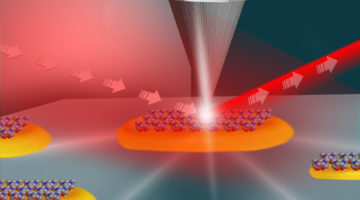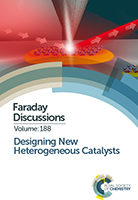A new study confirms that structural defects and jagged surfaces at the edges of platinum and gold nanoparticles are key hot spots for chemical reactivity. The experiments should help researchers customize the structural properties of catalysts to make them more effective in fostering chemical reactions. Read more »![]()
![]()
Chemistry on the Edge: Study Pinpoints Most Active Areas of Reactions on Nanoscale Particles
Experiments confirm that structural defects at the periphery are key in catalyst function. The SINS study is an important step in chronicling how the atomic structure of nanoparticles impacts their function as catalysts in chemical reactions. Read more »
SINS Reveals Dopant Effects in Plasmonic Materials
Using synchrotron infrared nanospectroscopy (SINS) at the ALS, researchers have for the first time probed infrared plasmonic excitations in single nanocrystals. This allowed the pinpointing of dopant effects on an emerging class of materials with potential for molecular-sensing and energy-harvesting applications. Read more »![]()
![]()
High spatial resolution mapping of chemically-active self-assembled N-heterocyclic carbenes on Pt nanoparticles
Many functional materials (e.g. catalysts) critically depend on the spatial distribution of surface active sites. However, most spectroscopic measurements are ensemble-based, where reactivity is averaged over millions of nanoparticles. Here, carbene attached to nanoparticle surfaces serves a model system for studying catalytic reactions on single nanoparticles. Read more »
Phonon Polariton Behavior in 2D Materials
Synchrotron infrared nanospectroscopy (SINS) was used to study the behavior of phonon polaritons in ultrathin crystals of hexagonal boron nitride. The results pave the way towards engineering infrared-light photonic nanodevices and expand our understanding of polariton behavior in low-dimensional nanomaterials. Read more »![]()
![]()
New ALS Technique Gives Nanoscale Views of Complex Systems
A new broadband imaging technique looks inside the mesoscale realm with unprecedented sensitivity and range. Synchrotron Infrared Nano-Spectroscopy (SINS) will enable in-depth study of complex molecular systems, including liquid batteries, living cells, novel electronic materials, and stardust.
Read more »![]()
![]()





